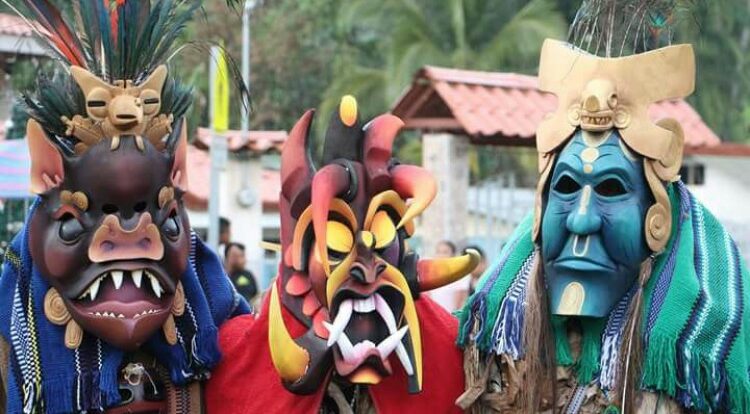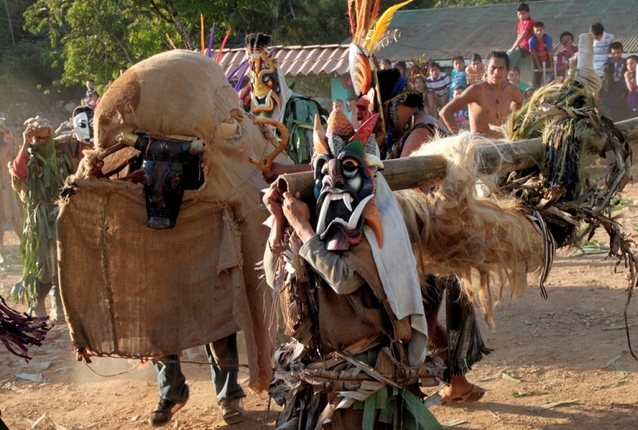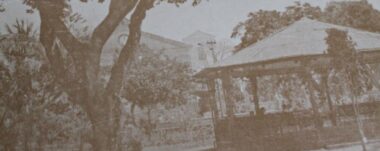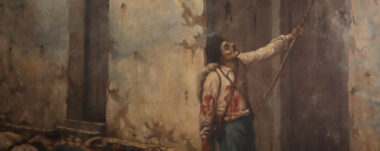The Boruca (Brún̈cajc) Community: an Indigenous Tribe of Costa Rica

boruca-costa-rica-sensorial-sunsets
The Boruca community: an indigenous tribe of Costa Rica
Source image: https://www.tec.ac.cr/hoyeneltec/2018/02/09/estudiante-indigena-obtuvo-importante-distincion-juego-diablitos-boruca
Culture, History and Past of Boruca Community
The Boruca community is one of the indigenous tribes found within the Costa Rican territory. This tribe lives in the Brunca region, located in the south of Costa Rica, composed of the Coto Brus, Buenos Aires and Perez Zeledon cantons. Currently, about 2,000 people belong to this community.
Their culture is based on faith and wisdom passed down through the generations. In this way, they maintain a respect for the ancestors of their community, the passed down stories and nature.
In the 16th century, there was an attempt of colonization by the Spanish conquerors. After an exhaustive struggle, they managed to keep their village and identity almost intact. However, the presence of the Catholic Church did influence their traditions.
The Boruca community survived on agriculture until the late 1960s. In this decade, agriculture did not provide the resources necessary for the well-being of the entire tribe. Families fell into extreme poverty and the need to reinvent themselves arose.
In 1970, Margarita Morales led a women’s group called “La Flor de Boruca” that promoted the rescue of handicrafts and other traditions. An opening for the sale of handicrafts and the reception of people interested in experiencing the Boruca culture revived the local economy. In 1985, the National Museum of Costa Rica granted an aid to the community to establish a local museum to exhibit Boruca history. More recently, the community developed a focus on ecotourism and ethno-tourism, establishing itself as a unique and unparalleled opportunity. This openness to national and international tourism has allowed them to strengthen some areas of their traditions while others have evolved to satisfy the market.

Language, Art and Culture of the Boruca Community
Currently, very few native inhabitants speak the Boruca language. Spanish became the dominant language due to colonization processes and the language of instruction at the educational level in the country. The native language is preserved mainly among the elders of the community. However, they did not pass it on to other generations.
Today, the Boruca still struggle to preserve their identity, so traditions, festivals and handicrafts are still elements of representation to other people. One of their best known festivals is the annual 4-day festival, “El baile de los diablitos”, where the attempt of colonization by the Spaniards is recreated. In this festivity, the Borucas, dressed in devil masks, confront the Spaniards, represented by the figure of a bull. At the end of the representation, the conquerors think they have won the battle. However, as if by magic, the Indians come back to life and defeat the Spaniards, finally winning the battle.
On the other hand, they are also known for practicing sustainable agriculture, that is, they grow the food they need to feed their families. Their fields are strategically located in the hills. The families grow rice, beans, coffee, cocoa, fruits, corn and tomatoes, the main foods with which they prepare their daily meals. Families also raise cows, chickens and pigs.
As for medicine, it has a more naturopathic approach, since the inhabitants maintain their traditional methods. In spite of having a medical center, natural and plant-based remedies are more commonly used, especially for women’s health.
Boruca masks
The most striking and well-known handicrafts of the Boruca community are their traditional masks. These masks are carved from balsa wood or cedar with figures of people, flora or fauna. The masks are a reflection of the Boruca cosmovision. Depending on the base material, they are painted in bright colors. Each design is unique and unrepeatable.
Traditionally, the masks were made for battle and some rituals. Currently, they have come to have a more decorative use, apart from their use in the “Baile de los Diablitos”.
Boruca Legends
Legends are sometimes fact-based. For example, the story of Cuasrán, an important Boruca figure who fled in resistance to Spanish domination and whose spirit, the villagers say, observes and watches over them from a nearby mountain. Another mythical example is “La Serpiente”, where a young woman falls in love with a giant snake and, when she becomes pregnant, the angry people decide to kill them, so that only a snake child survives, who is believed to live in the mountain. Nature is the source of inspiration for the Boruca. Their stories contain magical elements such as gifts from mystical creatures and huge waterfalls that hold secrets. Legends also seek to explain the consequences of not caring for nature. Because of this, themes of great tremors, torrential rains and strong blizzards that cause dangerous floods throughout the valley, killing people and animals, are common.
In Summary
- The Boruca community is an indigenous community of Costa Rica located in the cantons of Coto Brus, Buenos Aires and Perez Zeledón with 2 000 members.
- Their culture is based on faith and wisdom that is passed down through generations.
- The most striking and well-known handicrafts of the Boruca population are their traditional masks.
- Legends are of great significance to the Boruca people who seek to keep their history and ideals alive.
References
http://www.boruca.org/es/cultura/
https://ranchobrugra.com/mascaras-borucas/#:~:text=Una%20m%C3%A1scara%20Boruca%20es%20una,caracter%C3%ADsticas%20tanto%20zoomorfas%20como%20antropomorfas. https://conlamochilaylascholas.com/mascaras-borucas-costa-rica
Authors
Zelda Walters and Angie Loveday for
Navigate articles




